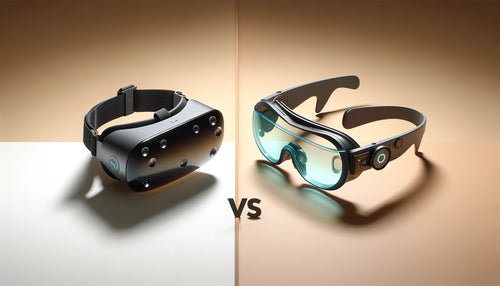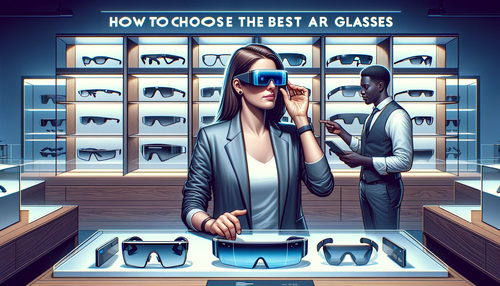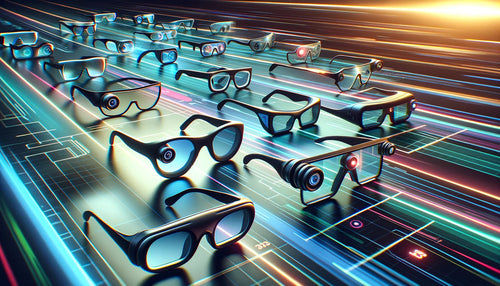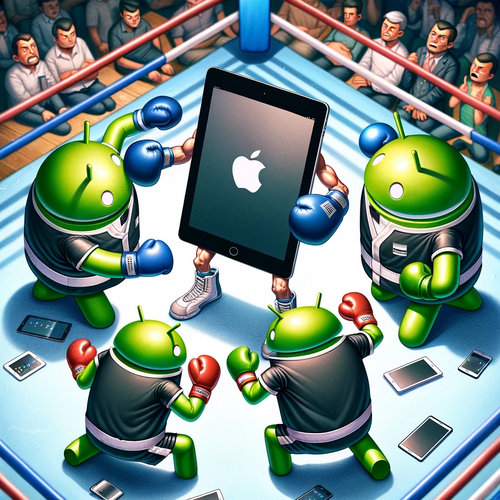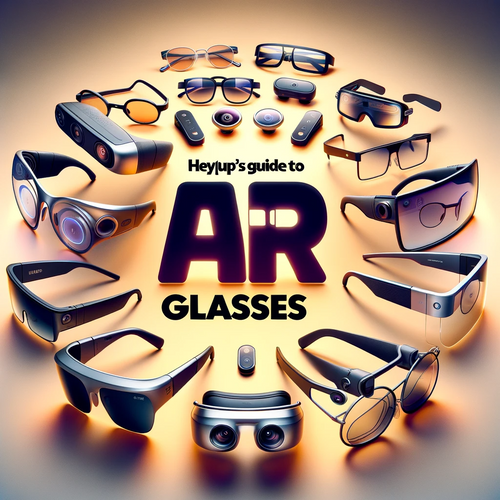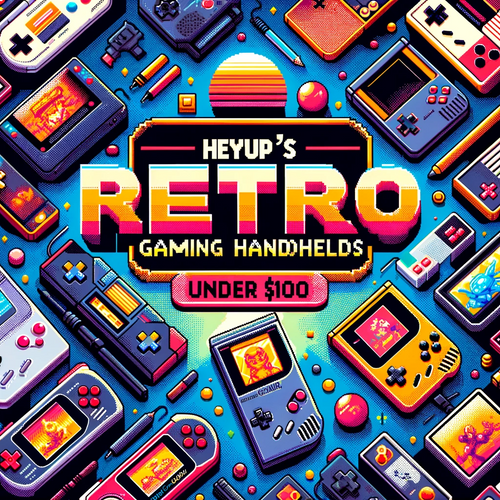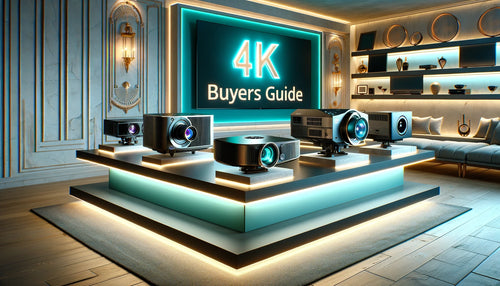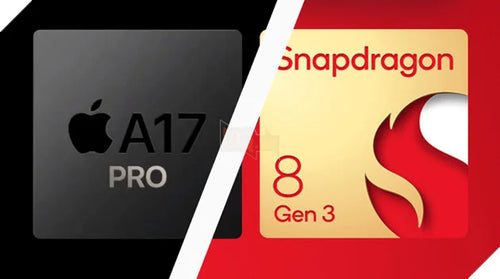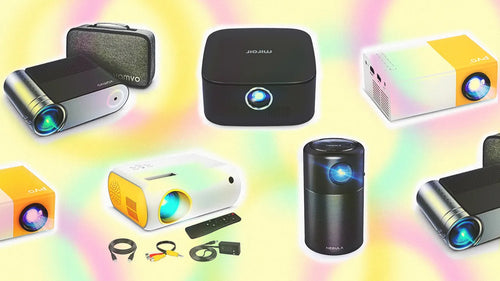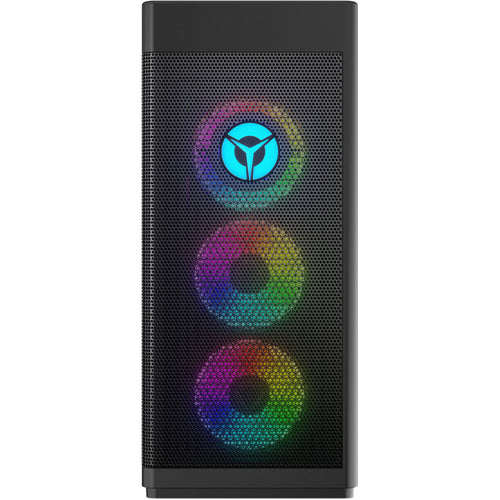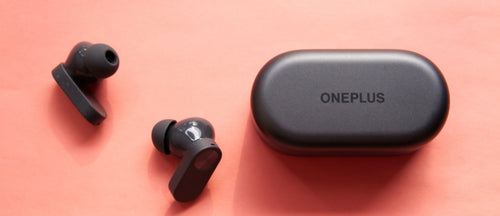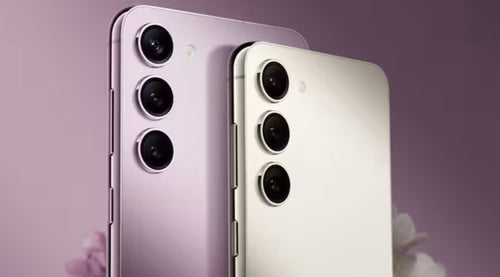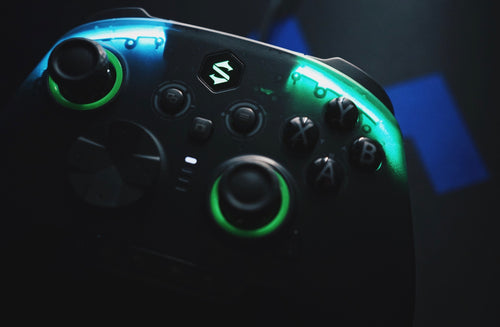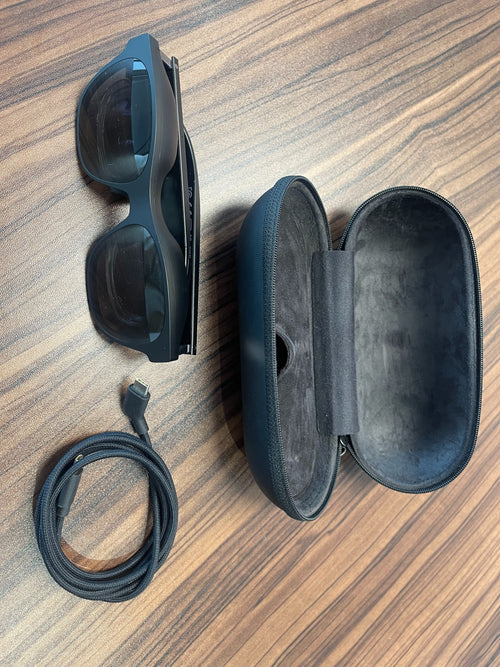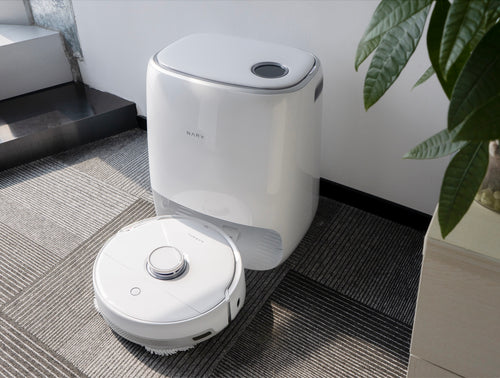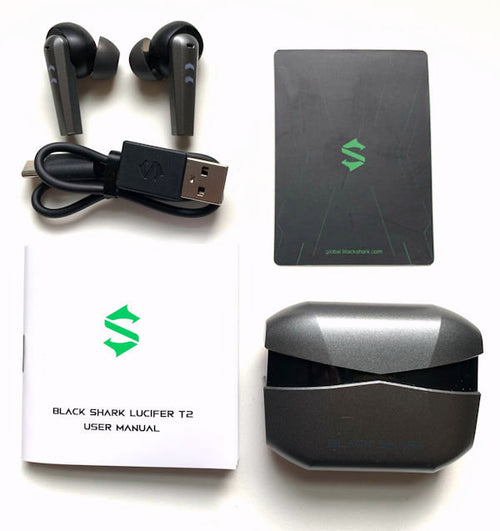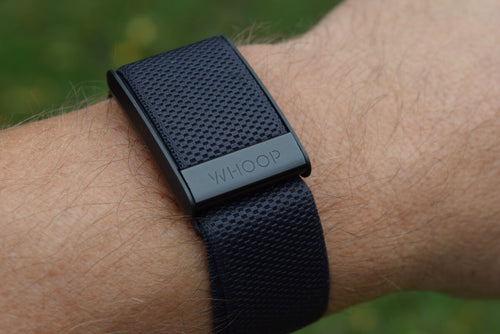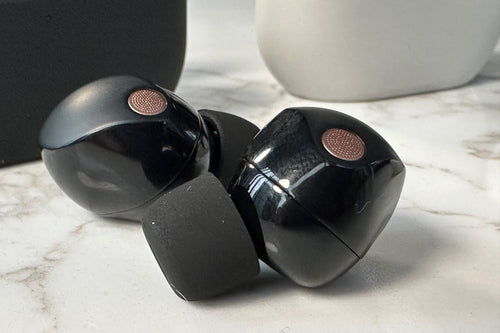From smartwatches to health-tracking pants: Everything you’ve ever wanted to know about wearable tech.

In the relentless conga line of technological progress, we've stumbled upon a new dance partner: wearable tech. These gizmos are giving our relationship with the digital universe a serious makeover.
So, it's only fair that we equip you, our esteemed Heyuppers, with the knowledge to surf the future matrix like a pro. So, fasten your seatbelts, dear reader, as we embark on a whirlwind tour through the Jurassic Park of wearable tech's evolution. We'll explore its multifaceted categories and the game-changing devices that are causing more ripples than a sugar-fueled toddler let loose on a chessboard.
Hold onto your hats (unless they're smart hats, in which case they'll probably hold onto you) as we unveil how this tech could potentially rearrange our lives and futures like a particularly enthusiastic interior designer.
Wearable Tech: A Nostalgic Look Back and a Gaze Forward
The genesis of wearable technology can be traced back to the swinging 60s, when Casio, in a stroke of genius, introduced a watch with calculator capabilities. However, it was the marriage of wearable devices with the Internet of Things (IoT) in the 2010s that catapulted this innovation into the limelight, enabling seamless connectivity and real-time surveillance of our quotidian activities.
Decoding the Wearable Tech Spectrum

Wearable technology is not a one-size-fits-all affair; it comprises a diverse array of categories designed to cater to a smorgasbord of preferences and needs. Let's take a jaunt through these categories that have emerged as the pillars of the wearable tech revolution:
Smartwatches: The true vanguards of wearable tech, smartwatches have given timekeeping a facelift. They serve as extensions of our smartphones, allowing us to read messages, monitor our fitness, and perform a plethora of tasks without so much as a sidelong glance at our phones. From the Apple Watch Series to the Samsung Galaxy Watch and Fitbit Versa, these wrist companions redefine convenience.
Smart Jewelry: Marrying fashion with function, smart jewelry adds a dash of elegance to wearable tech. From rings to bracelets, these pieces embed health-tracking sensors, with the Oura Ring leading the charge. Not only does it monitor health metrics, but it also maintains the charm of traditional jewelry.
Fitness Trackers: The modern successors of pedometers, fitness trackers are your fitness confidants. Brands like Fitbit present devices such as the Fitbit Charge 5, which offers insights into your wellness journey, tracks your sleep patterns, and keeps you in the loop with notifications.
Smart Clothing: Step into a realm where fashion meets technology. Smart clothing integrates sensors into apparel, resulting in innovations like Siren Socks, which detect foot ulcers, Nadi X smart pants that enhance yoga form, and Naviano smart swimsuits that even remind you to apply sunscreen.
Implantables: Taking wearables beneath the skin, implantables interact from within. Companies like Proteus introduce sensor-containing pills for internal health monitoring, challenging the boundaries of safety and privacy.
Head-Mounted Displays: Transporting us to new dimensions, head-mounted displays (HMDs) offer a visual escape. Whether through Augmented Reality (AR) or Virtual Reality (VR), HMDs redefine how we perceive reality. Magic Leap One, Microsoft's HoloLens 2, and affordable options like Vuzix Glasses are all on the frontier of this technology.
Crowning the Wearable Tech Champions

Now it's time to roll out the red carpet and shine the spotlight on the crème de la crème of wearable tech. These are the devices that have not only danced to the rhythm of innovation but have also choreographed the steps.
Smartwatches: Apple Watch Series, Samsung Galaxy Watch, and Fitbit Versa emerge as the ultimate smartwatch trifecta, setting standards with health monitoring and seamless connectivity.
Smart Jewelry: The subtle and sophisticated Oura Ring takes the crown, proving that health-tracking can blend seamlessly with elegance.
Fitness Trackers: Fitbit Charge 5 emerges as the torchbearer, leading the way in fitness tracking, sleep monitoring, and smart notifications.
Smart Clothing: Nadi X smart pants revolutionize activewear, combining technology and yoga practice for an unmatched fitness experience.
Implantables: While still in its infancy, Proteus' sensor-containing pills offer a glimpse into the future of internal health monitoring.
Head-Mounted Displays: Step into the immersive realms with Meta's Quest Pro and Microsoft's HoloLens 2, setting the stage for the AR and VR revolution.
Navigating Wearable Tech: Your Burning Questions Answered
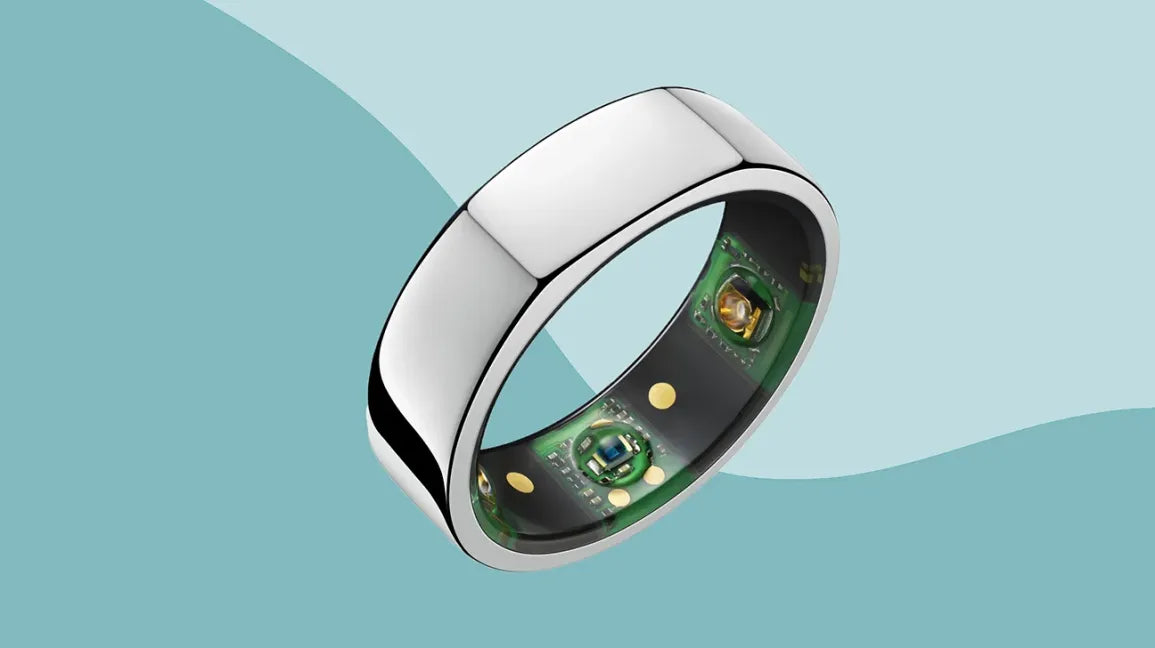
Wearable technology has transformed the way we interact with the digital world and our own bodies. From tracking daily activities to enhancing healthcare, these devices have become essential companions in our modern lives.
However, with the numerous benefits come valid concerns and questions. In this section, we delve into some common queries users of wearable tech might have, shedding light on both the pros and cons of these innovative devices. Let's dive into the world of wearable technology and address your pressing inquiries.
- Question: How can wearable technology benefit my health?
Answer: Wearable tech supports healthcare by monitoring vital health metrics such as heart rate, stress, and sleep levels. It can also cater to specific needs, such as heart health, with wearable heart rate monitors and implantable devices like pacemakers designed to control heart rate and irregularities.
- Question: Is wearable technology easy to integrate into daily life?
Answer: Yes, wearable technology today is much easier to use. Devices are lightweight, smarter, and more comfortable. They seamlessly integrate with smartphones or function independently, offering portability and user-friendly interfaces.
- Question: How can wearable technology enhance the lives of older individuals?
Answer: Wearable tech offers added independence for older people. Medical alert systems with fall detection provide quick assistance in emergencies. Features like medication reminders and voice commands cater to seniors' needs, and devices with larger screens and simple controls accommodate impairments.
- Question: Can wearable technology boost productivity?
Answer: Absolutely, wearable tech can enhance productivity. Voice commands for reminders, note dictation, and list-making save time. Wearables help reduce distractions by displaying schedules, notifications, and tasks at a glance.
- Question: How does wearable technology contribute to fitness?
Answer: Wearables track fitness goals, encouraging exercise and fostering healthy competition among colleagues and friends. They also promote safe working practices by monitoring worker fatigue and suggesting breaks.
- Question: What safety benefits does wearable technology offer in the workplace?
Answer: Wearable tech monitors worker fatigue and can include "smart" personal protective equipment like glasses with heads-up displays and hard hats with sensors. This ensures employee safety and well-being.
- Question: What are the potential data security concerns with wearable technology?
Answer: Wearables collect personal data and connect to the internet. Users should review privacy policies, security features, and permissions. Regular software updates are crucial to maintain security.
- Question: What technical considerations should I be aware of with wearables?
Answer: Wearables rely on batteries, and advancements in battery technology impact device lifespan and comfort. Users seek devices with quick charging and extended battery life, but quality batteries may affect device pricing.
- Question: What limitations exist in terms of wearable technology capabilities?
Answer: Wearable devices have smaller screen sizes compared to smartphones, although some models are increasing screen sizes. Additionally, some wearables require smartphone connectivity to function.
- Question: Are wearable devices expensive?
Answer: While current wearables can be relatively expensive, growing competition in the market is leading to more affordable options. As technology improves and becomes cheaper, we can expect highly powerful and budget-friendly wearable devices in the near future.
The Current Landscape and a Glimpse into Tomorrow
Wearable tech stands on the precipice of monumental transformation, poised to shape the metaverse—a fusion of the physical and digital worlds. While economic uncertainties and data privacy concerns cast shadows, the trajectory remains upward. Consumer IoT, including wearables, is projected to constitute a significant portion of global IoT revenue, with wearable tech spearheading the charge.
As the metaverse takes shape, expect revolutionary applications for wearables, from immersive collaborations to virtual training experiences. Although economic constraints may momentarily affect consumer spending on high-end devices, the versatility and potential of wearable technology remain resolute.
So, as we stand on the brink of this exciting new era, we can't help but wonder: How will wearable tech shape our lives in the future? Will it redefine our interactions, or will it raise new challenges we've yet to foresee? We'd love to hear your thoughts on this. Head over to Heyup's community page and join the conversation. Let's explore the future of wearable tech together!
